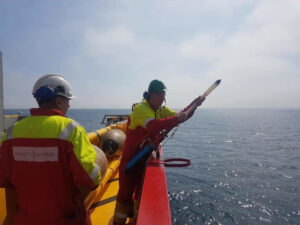The fires are a threat to urban environments and forests, causing economic loss, human death and environmental damage.
Whenever there is a fire, firefighters are involved in very difficult and demanding activities, where there are risks to life and facilities.
Complex fire-fighting missions require effective support to achieve successful emergency response. For firefighting situations some fire departments are deploying new tools and technologies such as Unmanned Ground Vehicles (UGV), autonomous or remotely operated, to reduce human casualties and helps combat fires in the most effective way.
The urgent need to reduce the working risks faced in some sectors in a multitude of situations, represents one of the factors that have contributed to the growth of the UGV market in recent years.
The deployment of unmanned systems would minimize the exposure of danger to firefighter by transferring the operational risks of the scenario to robots.
Remotely Operated or Tele-Operated system provides a human operator that controls an UGV vehicle through First Person View (FPV) or Line-Of-Sight (LoS) mode. The connection is either obtained via a tether or linked by radio-control.
An autonomous system is able to perform certain mission without any human intervention or interaction.
UGVs are generally equipped with different environmental sensors, a variety of processors and communications devices, power sources or other special purpose equipment such as cameras, gyro, accelerometers, inclinometers, laser scanner, GPS, magnetometers, IR sensor, Inertial Navigation System (INS ), temperature sensors, remote sensing tool, etc.
The fire can quickly spread, these systems can provide effective support in the fire prevention and control.
Jessica Moro
DSO
Massimo Torboli
DSO
Image
Cover: Robot Colossus de la société Shark Robotics – Robot pompier, by Shark Robotics.

